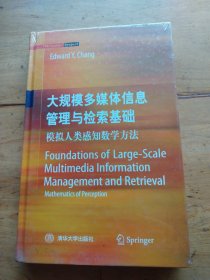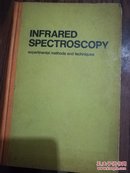
大规模多媒体信息管理与检索基础(英):模拟人类感知数学方法
¥ 14 2.4折 ¥ 59 全新
仅1件
作者张智威 编
出版社清华大学出版社
出版时间2011-05
版次1
装帧平装
货号39-5-4
上书时间2024-04-22
- 在售商品 暂无
- 平均发货时间 10小时
- 好评率 暂无
- 店主推荐
- 最新上架
商品详情
- 品相描述:全新
图书标准信息
- 作者 张智威 编
- 出版社 清华大学出版社
- 出版时间 2011-05
- 版次 1
- ISBN 9787302249764
- 定价 59.00元
- 装帧 平装
- 开本 16开
- 纸张 胶版纸
- 页数 300页
- 【内容简介】
-
大规模多媒体信息管理与检索面临着两大类艰巨的技术挑战。首先,这一工程问题的研究在本质上是多领域、跨学科的,涉及信号处理、计算机视觉、数据库、机器学习、神经科学和认知心理学;其次,一个有效的解决方案必须能解决高维数据和网络规模数据的可扩展性问题。《大规模多媒体信息管理与检索基础(英):模拟人类感知数学方法》第一部分(第1~8章)着重介绍如何采用多领域、跨学科算法来解决特征提取及选择、知识表示、语义分析、距离函数的制定等问题;第二部分(第9~12章)对解决高维数据和网络规模数据的扩展性问题提出了有效的处理方法。此外,《大规模多媒体信息管理与检索基础(英):模拟人类感知数学方法》的附录还给出了作者开发的开源软件的下载地址。
《大规模多媒体信息管理与检索基础(英):模拟人类感知数学方法》是作者在美国加州大学从事多年的教学科研及在google公司工作多年的基础上编写的。《大规模多媒体信息管理与检索基础(英):模拟人类感知数学方法》适合多媒体、计算机视觉、机器学习、大规模数据处理等领域的研发人员阅读,也可作为高等院校计算机专业本科生及研究生的教材或教学参考书。
- 【作者简介】
- 张智威,Dr.EdwardY.ChangwasaprofessorattheDepartmentofElectrical&ComputerEngineering,UniversityofCaliforniaatSantaBarbara,beforehejoinedGoogleasaresearchdirectorin2006.Dr.ChangreceivedhisM.S.degreeinComputerScienceandPh.DdegreeinElectricalEngineering,bothfromStanfordUniversity.
- 【目录】
-
1 introduction - key subroutines of multimedia data management
1.1 overview
1.2 feature extraction
1.3 similarity
1.4 learning
1.5 multimodal fusion
1.6 indexing
1.7 scalability
1.8 concluding remarks
references
2 perceptual feature extraction
2.1 introduction
2.2 dmd algorithm
2.2.1 model-based pipeline
2.2.2 data-driven pipeline
2.3 experiments
2.3.1 dataset and setup
2.3.2 model-based vs. data-driven
2.3.3 dmd vs. individual models
2.3.4 regularization tuning
2.3.5 tough categories
2.4 related reading
2.5 concluding remarks
references
3 query concept learning
3.1 introduction
3.2 support vector machines and version space
3.3 active learning and batch sampling strategies
3.3.1 theoretical foundation
3.3.2 sampling strategies
3.4 concept-dependent learning
3.4.1 concept complexity
3.4.2 limitations of active learning
3.4.3 concept-dependent active learning algorithms
3.5 experiments and discussion
3.5.1 testbed and setup
3.5.2 active vs. passive learning
3.5.3 against traditional relevance feedback schemes
3.5.4 sampling method evaluation
3.5.5 concept-dependent learning
3.5.6 concept diversity evaluation
3.5.7 evaluation summary
3.6 related reading
3.6.1 machine learning
3.6.2 relevance feedback
3.7 relation to other chapters
3.8 concluding remarks
references
4 similarity
4.1 introduction
4.2 mining image feature set
4.2.1 image testbed setup
4.2.2 feature extraction
4.2.3 feature selection
4.3 discovering the dynamic partial distance function
4.3.1 minkowski metric and its limitations
4.3.2 dynamic partial distance function
4.3.3 psychological interpretation of dynamic partial distance function
4.4 empirical study
4.4.1 image retrieval
4.4.2 video shot-transition detection
4.4.3 near duplicated articles
4.4.4 weighted dpf vs. weighted euclidean
4.4.5 observations
4.5 related reading
4.6 concluding remarks
references
5 formulating distance functions
5.1 introduction
5.2 dfa algorithm
5.2.1 transformation model
5.2.2 distance metric learning
5.3 experimental evaluation
5.3.1 evaluation on contextual information
5.3.2 evaluation on effectiveness
5.3.3 observations
5.4 related reading
5.4.1 metric learning
5.4.2 kernel learning
5.5 concluding remarks
references
6 multimodal fusion
6.1 introduction
6.2 related reading
6.2.1 modality identification
6.2.2 modality fusion
6.3 independent modality analysis
6.3.1 pca
6.3.2 ica
6.3.3 img
6.4 super-kernel fusion
6.5 experiments
6.5.1 evaluation of modality analysis
6.5.2 evaluation of multimodal kernel fusion
6.5.3 observations
6.6 concluding remarks
references
7 fusing content and context with causality
7.1 introduction
7.2 related reading
7.2.1 photo annotation
7.2.2 probabilistic graphical models
7.3 multimodal metadata
7.3.1 contextual information
7.3.2 perceptual content
7.3.3 semantic ontology
7.4 influence diagrams
7.4.1 structure learning
7.4.2 causal strength
7.4.3 case study
7.4.4 dealing with missing attributes
7.5 experiments
7.5.1 experiment on learning structure
7.5.2 experiment on causal strength inference
7.5.3 experiment on semantic fusion
7.5.4 experiment on missing features
7.6 concluding remarks
references
8 combinational collaborative filtering, considering personalizafion
8.1 introduction
8.2 related reading
8.3 ccf: combinational collaborative filtering
8.3.1 c-u and c-d baseline models
8.3.2 ccf model
8.3.3 gibbs & em hybrid training
8.3.4 parallelization
8.3.5 inference
8.4 experiments
8.4.1 gibbs + em vs. em
8.4.2 the orkut dataset
8.4.3 runtime speedup
8.5 concluding remarks
references
9 imbalanced data learning
9.1 introduction
9.2 related reading
9.3 kernel boundary alignment
9.3.1 conformally transforming kernel k
9.3.2 modifying kernel matrix k
9.4 experimental results
9.4.1 vector-space evaluation
9.4.2 non-vector-space evaluation
9.5 concluding remarks
references
10 psvm: parallelizing support vector machines on distributed computers
10.1 introduction
10.2 interior point method with incomplete cholesky factorization
10.3 psvm algorithm
10.3.1 parallel icf
10.3.2 parallel ipm
10.3.3 computing parameter b and writing back
10.4 experiments
10.4.1 class-prediction accuracy
10.4.2 scalability
10.4.3 overheads
10.5 concluding remarks
references
11 approximate high-dimensional indexing with kernel
11.1 introduction
11.2 related reading
11.3 algorithm spheredex
11.3.1 create - building the index
11.3.2 search - querying the index
11.3.3 update - insertion and deletion
11.4 experiments
11.4.1 setup
11.4.2 performance with disk ios
11.4.3 choice of parameter g
11.4.4 impact of insertions
11.4.5 sequential vs. random
11.4.6 percentage of data processed
11.4.7 summary
11.5 concluding remarks
11.5.1 range queries
11.5.2 farthest neighbor queries
references
12 speeding up latent dirichlet allocation with parallelization and pipeline strategies
12.1 introduction
12.2 related reading
12.3 ad-lda: approximate distributed lda
12.3.1 parallel gibbs sampling and allreduce
12.3.2 mpi implementation of ad-lda
12.4 plda+
12.4.1 reduce bottleneck of ad-lda
12.4.2 framework of plda+
12.4.3 algorithm for pw processors
12.4.4 algorithm for pd processors
12.4.5 straggler handling
12.4.6 parameters and complexity
12.5 experimental results
12.5.1 datasets and experiment environment
12.5.2 perplexity
12.5.3 speedups and scalability
12.6 large-scale applications
12.6.1 mining social-network user latent behavior
12.6.2 question labeling (ql)
12.7 concluding remarks
references
— 没有更多了 —
























以下为对购买帮助不大的评价